-
EXECUTIVE SUMMARY
-
Market Overview
-
Key Findings
-
Market Segmentation
-
Competitive Landscape
-
Challenges and Opportunities
-
Future Outlook
-
MARKET INTRODUCTION
-
Definition
-
Scope of the study
-
Research Objective
-
Assumption
-
Limitations
-
RESEARCH METHODOLOGY
-
Overview
-
Data Mining
-
Secondary Research
-
Primary Research
-
Primary Interviews and Information Gathering Process
-
Breakdown of Primary Respondents
-
Forecasting Model
-
Market Size Estimation
-
Bottom-Up Approach
-
Top-Down Approach
-
Data Triangulation
-
Validation
-
MARKET DYNAMICS
-
Overview
-
Drivers
-
Restraints
-
Opportunities
-
MARKET FACTOR ANALYSIS
-
Value chain Analysis
-
Porter's Five Forces Analysis
-
Bargaining Power of Suppliers
-
Bargaining Power of Buyers
-
Threat of New Entrants
-
Threat of Substitutes
-
Intensity of Rivalry
-
COVID-19 Impact Analysis
-
Market Impact Analysis
-
Regional Impact
-
Opportunity and Threat Analysis
-
Distributed Energy Resource Management Market, BY Technology (USD Billion)
-
Solar Energy
-
Wind Energy
-
Energy Storage Systems
-
Microgrid
-
Demand Response
-
Distributed Energy Resource Management Market, BY Component (USD Billion)
-
Software
-
Hardware
-
Services
-
Distributed Energy Resource Management Market, BY End User (USD Billion)
-
Residential
-
Commercial
-
Industrial
-
Distributed Energy Resource Management Market, BY Application (USD Billion)
-
Demand-side Management
-
Power Generation
-
Grid Management
-
Distributed Energy Resource Management Market, BY Regional (USD Billion)
-
North America
-
US
-
Canada
-
Europe
-
Germany
-
UK
-
France
-
Russia
-
Italy
-
Spain
-
Rest of Europe
-
APAC
-
China
-
India
-
Japan
-
South Korea
-
Malaysia
-
Thailand
-
Indonesia
-
Rest of APAC
-
South America
-
Brazil
-
Mexico
-
Argentina
-
Rest of South America
-
MEA
-
GCC Countries
-
South Africa
-
Rest of MEA
-
Competitive Landscape
-
Overview
-
Competitive Analysis
-
Market share Analysis
-
Major Growth Strategy in the Distributed Energy Resource Management Market
-
Competitive Benchmarking
-
Leading Players in Terms of Number of Developments in the Distributed Energy Resource Management Market
-
Key developments and growth strategies
-
New Product Launch/Service Deployment
-
Merger & Acquisitions
-
Joint Ventures
-
Major Players Financial Matrix
-
Sales and Operating Income
-
Major Players R&D Expenditure. 2023
-
Company Profiles
-
ABB
-
Financial Overview
-
Products Offered
-
Key Developments
-
SWOT Analysis
-
Key Strategies
-
Sungrow
-
Financial Overview
-
Products Offered
-
Key Developments
-
SWOT Analysis
-
Key Strategies
-
NREL
-
Financial Overview
-
Products Offered
-
Key Developments
-
SWOT Analysis
-
Key Strategies
-
Salesforce
-
Financial Overview
-
Products Offered
-
Key Developments
-
SWOT Analysis
-
Key Strategies
-
Eaton
-
Financial Overview
-
Products Offered
-
Key Developments
-
SWOT Analysis
-
Key Strategies
-
Johnson Controls
-
Financial Overview
-
Products Offered
-
Key Developments
-
SWOT Analysis
-
Key Strategies
-
Competitive Energy Services
-
Financial Overview
-
Products Offered
-
Key Developments
-
SWOT Analysis
-
Key Strategies
-
Tesla
-
Financial Overview
-
Products Offered
-
Key Developments
-
SWOT Analysis
-
Key Strategies
-
Schneider Electric
-
Financial Overview
-
Products Offered
-
Key Developments
-
SWOT Analysis
-
Key Strategies
-
Enphase Energy
-
Financial Overview
-
Products Offered
-
Key Developments
-
SWOT Analysis
-
Key Strategies
-
Cisco Systems
-
Financial Overview
-
Products Offered
-
Key Developments
-
SWOT Analysis
-
Key Strategies
-
Honeywell
-
Financial Overview
-
Products Offered
-
Key Developments
-
SWOT Analysis
-
Key Strategies
-
Siemens
-
Financial Overview
-
Products Offered
-
Key Developments
-
SWOT Analysis
-
Key Strategies
-
General Electric
-
Financial Overview
-
Products Offered
-
Key Developments
-
SWOT Analysis
-
Key Strategies
-
Appendix
-
References
-
Related Reports
-
LIST Of tables
-
LIST OF ASSUMPTIONS
-
North America Distributed Energy Resource Management Market SIZE ESTIMATES & FORECAST, BY TECHNOLOGY, 2019-2035 (USD Billions)
-
North America Distributed Energy Resource Management Market SIZE ESTIMATES & FORECAST, BY COMPONENT, 2019-2035 (USD Billions)
-
North America Distributed Energy Resource Management Market SIZE ESTIMATES & FORECAST, BY END USER, 2019-2035 (USD Billions)
-
North America Distributed Energy Resource Management Market SIZE ESTIMATES & FORECAST, BY APPLICATION, 2019-2035 (USD Billions)
-
North America Distributed Energy Resource Management Market SIZE ESTIMATES & FORECAST, BY REGIONAL, 2019-2035 (USD Billions)
-
US Distributed Energy Resource Management Market SIZE ESTIMATES & FORECAST, BY TECHNOLOGY, 2019-2035 (USD Billions)
-
US Distributed Energy Resource Management Market SIZE ESTIMATES & FORECAST, BY COMPONENT, 2019-2035 (USD Billions)
-
US Distributed Energy Resource Management Market SIZE ESTIMATES & FORECAST, BY END USER, 2019-2035 (USD Billions)
-
US Distributed Energy Resource Management Market SIZE ESTIMATES & FORECAST, BY APPLICATION, 2019-2035 (USD Billions)
-
US Distributed Energy Resource Management Market SIZE ESTIMATES & FORECAST, BY REGIONAL, 2019-2035 (USD Billions)
-
Canada Distributed Energy Resource Management Market SIZE ESTIMATES & FORECAST, BY TECHNOLOGY, 2019-2035 (USD Billions)
-
Canada Distributed Energy Resource Management Market SIZE ESTIMATES & FORECAST, BY COMPONENT, 2019-2035 (USD Billions)
-
Canada Distributed Energy Resource Management Market SIZE ESTIMATES & FORECAST, BY END USER, 2019-2035 (USD Billions)
-
Canada Distributed Energy Resource Management Market SIZE ESTIMATES & FORECAST, BY APPLICATION, 2019-2035 (USD Billions)
-
Canada Distributed Energy Resource Management Market SIZE ESTIMATES & FORECAST, BY REGIONAL, 2019-2035 (USD Billions)
-
Europe Distributed Energy Resource Management Market SIZE ESTIMATES & FORECAST, BY TECHNOLOGY, 2019-2035 (USD Billions)
-
Europe Distributed Energy Resource Management Market SIZE ESTIMATES & FORECAST, BY COMPONENT, 2019-2035 (USD Billions)
-
Europe Distributed Energy Resource Management Market SIZE ESTIMATES & FORECAST, BY END USER, 2019-2035 (USD Billions)
-
Europe Distributed Energy Resource Management Market SIZE ESTIMATES & FORECAST, BY APPLICATION, 2019-2035 (USD Billions)
-
Europe Distributed Energy Resource Management Market SIZE ESTIMATES & FORECAST, BY REGIONAL, 2019-2035 (USD Billions)
-
Germany Distributed Energy Resource Management Market SIZE ESTIMATES & FORECAST, BY TECHNOLOGY, 2019-2035 (USD Billions)
-
Germany Distributed Energy Resource Management Market SIZE ESTIMATES & FORECAST, BY COMPONENT, 2019-2035 (USD Billions)
-
Germany Distributed Energy Resource Management Market SIZE ESTIMATES & FORECAST, BY END USER, 2019-2035 (USD Billions)
-
Germany Distributed Energy Resource Management Market SIZE ESTIMATES & FORECAST, BY APPLICATION, 2019-2035 (USD Billions)
-
Germany Distributed Energy Resource Management Market SIZE ESTIMATES & FORECAST, BY REGIONAL, 2019-2035 (USD Billions)
-
UK Distributed Energy Resource Management Market SIZE ESTIMATES & FORECAST, BY TECHNOLOGY, 2019-2035 (USD Billions)
-
UK Distributed Energy Resource Management Market SIZE ESTIMATES & FORECAST, BY COMPONENT, 2019-2035 (USD Billions)
-
UK Distributed Energy Resource Management Market SIZE ESTIMATES & FORECAST, BY END USER, 2019-2035 (USD Billions)
-
UK Distributed Energy Resource Management Market SIZE ESTIMATES & FORECAST, BY APPLICATION, 2019-2035 (USD Billions)
-
UK Distributed Energy Resource Management Market SIZE ESTIMATES & FORECAST, BY REGIONAL, 2019-2035 (USD Billions)
-
France Distributed Energy Resource Management Market SIZE ESTIMATES & FORECAST, BY TECHNOLOGY, 2019-2035 (USD Billions)
-
France Distributed Energy Resource Management Market SIZE ESTIMATES & FORECAST, BY COMPONENT, 2019-2035 (USD Billions)
-
France Distributed Energy Resource Management Market SIZE ESTIMATES & FORECAST, BY END USER, 2019-2035 (USD Billions)
-
France Distributed Energy Resource Management Market SIZE ESTIMATES & FORECAST, BY APPLICATION, 2019-2035 (USD Billions)
-
France Distributed Energy Resource Management Market SIZE ESTIMATES & FORECAST, BY REGIONAL, 2019-2035 (USD Billions)
-
Russia Distributed Energy Resource Management Market SIZE ESTIMATES & FORECAST, BY TECHNOLOGY, 2019-2035 (USD Billions)
-
Russia Distributed Energy Resource Management Market SIZE ESTIMATES & FORECAST, BY COMPONENT, 2019-2035 (USD Billions)
-
Russia Distributed Energy Resource Management Market SIZE ESTIMATES & FORECAST, BY END USER, 2019-2035 (USD Billions)
-
Russia Distributed Energy Resource Management Market SIZE ESTIMATES & FORECAST, BY APPLICATION, 2019-2035 (USD Billions)
-
Russia Distributed Energy Resource Management Market SIZE ESTIMATES & FORECAST, BY REGIONAL, 2019-2035 (USD Billions)
-
Italy Distributed Energy Resource Management Market SIZE ESTIMATES & FORECAST, BY TECHNOLOGY, 2019-2035 (USD Billions)
-
Italy Distributed Energy Resource Management Market SIZE ESTIMATES & FORECAST, BY COMPONENT, 2019-2035 (USD Billions)
-
Italy Distributed Energy Resource Management Market SIZE ESTIMATES & FORECAST, BY END USER, 2019-2035 (USD Billions)
-
Italy Distributed Energy Resource Management Market SIZE ESTIMATES & FORECAST, BY APPLICATION, 2019-2035 (USD Billions)
-
Italy Distributed Energy Resource Management Market SIZE ESTIMATES & FORECAST, BY REGIONAL, 2019-2035 (USD Billions)
-
Spain Distributed Energy Resource Management Market SIZE ESTIMATES & FORECAST, BY TECHNOLOGY, 2019-2035 (USD Billions)
-
Spain Distributed Energy Resource Management Market SIZE ESTIMATES & FORECAST, BY COMPONENT, 2019-2035 (USD Billions)
-
Spain Distributed Energy Resource Management Market SIZE ESTIMATES & FORECAST, BY END USER, 2019-2035 (USD Billions)
-
Spain Distributed Energy Resource Management Market SIZE ESTIMATES & FORECAST, BY APPLICATION, 2019-2035 (USD Billions)
-
Spain Distributed Energy Resource Management Market SIZE ESTIMATES & FORECAST, BY REGIONAL, 2019-2035 (USD Billions)
-
Rest of Europe Distributed Energy Resource Management Market SIZE ESTIMATES & FORECAST, BY TECHNOLOGY, 2019-2035 (USD Billions)
-
Rest of Europe Distributed Energy Resource Management Market SIZE ESTIMATES & FORECAST, BY COMPONENT, 2019-2035 (USD Billions)
-
Rest of Europe Distributed Energy Resource Management Market SIZE ESTIMATES & FORECAST, BY END USER, 2019-2035 (USD Billions)
-
Rest of Europe Distributed Energy Resource Management Market SIZE ESTIMATES & FORECAST, BY APPLICATION, 2019-2035 (USD Billions)
-
Rest of Europe Distributed Energy Resource Management Market SIZE ESTIMATES & FORECAST, BY REGIONAL, 2019-2035 (USD Billions)
-
APAC Distributed Energy Resource Management Market SIZE ESTIMATES & FORECAST, BY TECHNOLOGY, 2019-2035 (USD Billions)
-
APAC Distributed Energy Resource Management Market SIZE ESTIMATES & FORECAST, BY COMPONENT, 2019-2035 (USD Billions)
-
APAC Distributed Energy Resource Management Market SIZE ESTIMATES & FORECAST, BY END USER, 2019-2035 (USD Billions)
-
APAC Distributed Energy Resource Management Market SIZE ESTIMATES & FORECAST, BY APPLICATION, 2019-2035 (USD Billions)
-
APAC Distributed Energy Resource Management Market SIZE ESTIMATES & FORECAST, BY REGIONAL, 2019-2035 (USD Billions)
-
China Distributed Energy Resource Management Market SIZE ESTIMATES & FORECAST, BY TECHNOLOGY, 2019-2035 (USD Billions)
-
China Distributed Energy Resource Management Market SIZE ESTIMATES & FORECAST, BY COMPONENT, 2019-2035 (USD Billions)
-
China Distributed Energy Resource Management Market SIZE ESTIMATES & FORECAST, BY END USER, 2019-2035 (USD Billions)
-
China Distributed Energy Resource Management Market SIZE ESTIMATES & FORECAST, BY APPLICATION, 2019-2035 (USD Billions)
-
China Distributed Energy Resource Management Market SIZE ESTIMATES & FORECAST, BY REGIONAL, 2019-2035 (USD Billions)
-
India Distributed Energy Resource Management Market SIZE ESTIMATES & FORECAST, BY TECHNOLOGY, 2019-2035 (USD Billions)
-
India Distributed Energy Resource Management Market SIZE ESTIMATES & FORECAST, BY COMPONENT, 2019-2035 (USD Billions)
-
India Distributed Energy Resource Management Market SIZE ESTIMATES & FORECAST, BY END USER, 2019-2035 (USD Billions)
-
India Distributed Energy Resource Management Market SIZE ESTIMATES & FORECAST, BY APPLICATION, 2019-2035 (USD Billions)
-
India Distributed Energy Resource Management Market SIZE ESTIMATES & FORECAST, BY REGIONAL, 2019-2035 (USD Billions)
-
Japan Distributed Energy Resource Management Market SIZE ESTIMATES & FORECAST, BY TECHNOLOGY, 2019-2035 (USD Billions)
-
Japan Distributed Energy Resource Management Market SIZE ESTIMATES & FORECAST, BY COMPONENT, 2019-2035 (USD Billions)
-
Japan Distributed Energy Resource Management Market SIZE ESTIMATES & FORECAST, BY END USER, 2019-2035 (USD Billions)
-
Japan Distributed Energy Resource Management Market SIZE ESTIMATES & FORECAST, BY APPLICATION, 2019-2035 (USD Billions)
-
Japan Distributed Energy Resource Management Market SIZE ESTIMATES & FORECAST, BY REGIONAL, 2019-2035 (USD Billions)
-
South Korea Distributed Energy Resource Management Market SIZE ESTIMATES & FORECAST, BY TECHNOLOGY, 2019-2035 (USD Billions)
-
South Korea Distributed Energy Resource Management Market SIZE ESTIMATES & FORECAST, BY COMPONENT, 2019-2035 (USD Billions)
-
South Korea Distributed Energy Resource Management Market SIZE ESTIMATES & FORECAST, BY END USER, 2019-2035 (USD Billions)
-
South Korea Distributed Energy Resource Management Market SIZE ESTIMATES & FORECAST, BY APPLICATION, 2019-2035 (USD Billions)
-
South Korea Distributed Energy Resource Management Market SIZE ESTIMATES & FORECAST, BY REGIONAL, 2019-2035 (USD Billions)
-
Malaysia Distributed Energy Resource Management Market SIZE ESTIMATES & FORECAST, BY TECHNOLOGY, 2019-2035 (USD Billions)
-
Malaysia Distributed Energy Resource Management Market SIZE ESTIMATES & FORECAST, BY COMPONENT, 2019-2035 (USD Billions)
-
Malaysia Distributed Energy Resource Management Market SIZE ESTIMATES & FORECAST, BY END USER, 2019-2035 (USD Billions)
-
Malaysia Distributed Energy Resource Management Market SIZE ESTIMATES & FORECAST, BY APPLICATION, 2019-2035 (USD Billions)
-
Malaysia Distributed Energy Resource Management Market SIZE ESTIMATES & FORECAST, BY REGIONAL, 2019-2035 (USD Billions)
-
Thailand Distributed Energy Resource Management Market SIZE ESTIMATES & FORECAST, BY TECHNOLOGY, 2019-2035 (USD Billions)
-
Thailand Distributed Energy Resource Management Market SIZE ESTIMATES & FORECAST, BY COMPONENT, 2019-2035 (USD Billions)
-
Thailand Distributed Energy Resource Management Market SIZE ESTIMATES & FORECAST, BY END USER, 2019-2035 (USD Billions)
-
Thailand Distributed Energy Resource Management Market SIZE ESTIMATES & FORECAST, BY APPLICATION, 2019-2035 (USD Billions)
-
Thailand Distributed Energy Resource Management Market SIZE ESTIMATES & FORECAST, BY REGIONAL, 2019-2035 (USD Billions)
-
Indonesia Distributed Energy Resource Management Market SIZE ESTIMATES & FORECAST, BY TECHNOLOGY, 2019-2035 (USD Billions)
-
Indonesia Distributed Energy Resource Management Market SIZE ESTIMATES & FORECAST, BY COMPONENT, 2019-2035 (USD Billions)
-
Indonesia Distributed Energy Resource Management Market SIZE ESTIMATES & FORECAST, BY END USER, 2019-2035 (USD Billions)
-
Indonesia Distributed Energy Resource Management Market SIZE ESTIMATES & FORECAST, BY APPLICATION, 2019-2035 (USD Billions)
-
Indonesia Distributed Energy Resource Management Market SIZE ESTIMATES & FORECAST, BY REGIONAL, 2019-2035 (USD Billions)
-
Rest of APAC Distributed Energy Resource Management Market SIZE ESTIMATES & FORECAST, BY TECHNOLOGY, 2019-2035 (USD Billions)
-
Rest of APAC Distributed Energy Resource Management Market SIZE ESTIMATES & FORECAST, BY COMPONENT, 2019-2035 (USD Billions)
-
Rest of APAC Distributed Energy Resource Management Market SIZE ESTIMATES & FORECAST, BY END USER, 2019-2035 (USD Billions)
-
Rest of APAC Distributed Energy Resource Management Market SIZE ESTIMATES & FORECAST, BY APPLICATION, 2019-2035 (USD Billions)
-
Rest of APAC Distributed Energy Resource Management Market SIZE ESTIMATES & FORECAST, BY REGIONAL, 2019-2035 (USD Billions)
-
South America Distributed Energy Resource Management Market SIZE ESTIMATES & FORECAST, BY TECHNOLOGY, 2019-2035 (USD Billions)
-
South America Distributed Energy Resource Management Market SIZE ESTIMATES & FORECAST, BY COMPONENT, 2019-2035 (USD Billions)
-
South America Distributed Energy Resource Management Market SIZE ESTIMATES & FORECAST, BY END USER, 2019-2035 (USD Billions)
-
South America Distributed Energy Resource Management Market SIZE ESTIMATES & FORECAST, BY APPLICATION, 2019-2035 (USD Billions)
-
South America Distributed Energy Resource Management Market SIZE ESTIMATES & FORECAST, BY REGIONAL, 2019-2035 (USD Billions)
-
Brazil Distributed Energy Resource Management Market SIZE ESTIMATES & FORECAST, BY TECHNOLOGY, 2019-2035 (USD Billions)
-
Brazil Distributed Energy Resource Management Market SIZE ESTIMATES & FORECAST, BY COMPONENT, 2019-2035 (USD Billions)
-
Brazil Distributed Energy Resource Management Market SIZE ESTIMATES & FORECAST, BY END USER, 2019-2035 (USD Billions)
-
Brazil Distributed Energy Resource Management Market SIZE ESTIMATES & FORECAST, BY APPLICATION, 2019-2035 (USD Billions)
-
Brazil Distributed Energy Resource Management Market SIZE ESTIMATES & FORECAST, BY REGIONAL, 2019-2035 (USD Billions)
-
Mexico Distributed Energy Resource Management Market SIZE ESTIMATES & FORECAST, BY TECHNOLOGY, 2019-2035 (USD Billions)
-
Mexico Distributed Energy Resource Management Market SIZE ESTIMATES & FORECAST, BY COMPONENT, 2019-2035 (USD Billions)
-
Mexico Distributed Energy Resource Management Market SIZE ESTIMATES & FORECAST, BY END USER, 2019-2035 (USD Billions)
-
Mexico Distributed Energy Resource Management Market SIZE ESTIMATES & FORECAST, BY APPLICATION, 2019-2035 (USD Billions)
-
Mexico Distributed Energy Resource Management Market SIZE ESTIMATES & FORECAST, BY REGIONAL, 2019-2035 (USD Billions)
-
Argentina Distributed Energy Resource Management Market SIZE ESTIMATES & FORECAST, BY TECHNOLOGY, 2019-2035 (USD Billions)
-
Argentina Distributed Energy Resource Management Market SIZE ESTIMATES & FORECAST, BY COMPONENT, 2019-2035 (USD Billions)
-
Argentina Distributed Energy Resource Management Market SIZE ESTIMATES & FORECAST, BY END USER, 2019-2035 (USD Billions)
-
Argentina Distributed Energy Resource Management Market SIZE ESTIMATES & FORECAST, BY APPLICATION, 2019-2035 (USD Billions)
-
Argentina Distributed Energy Resource Management Market SIZE ESTIMATES & FORECAST, BY REGIONAL, 2019-2035 (USD Billions)
-
Rest of South America Distributed Energy Resource Management Market SIZE ESTIMATES & FORECAST, BY TECHNOLOGY, 2019-2035 (USD Billions)
-
Rest of South America Distributed Energy Resource Management Market SIZE ESTIMATES & FORECAST, BY COMPONENT, 2019-2035 (USD Billions)
-
Rest of South America Distributed Energy Resource Management Market SIZE ESTIMATES & FORECAST, BY END USER, 2019-2035 (USD Billions)
-
Rest of South America Distributed Energy Resource Management Market SIZE ESTIMATES & FORECAST, BY APPLICATION, 2019-2035 (USD Billions)
-
Rest of South America Distributed Energy Resource Management Market SIZE ESTIMATES & FORECAST, BY REGIONAL, 2019-2035 (USD Billions)
-
MEA Distributed Energy Resource Management Market SIZE ESTIMATES & FORECAST, BY TECHNOLOGY, 2019-2035 (USD Billions)
-
MEA Distributed Energy Resource Management Market SIZE ESTIMATES & FORECAST, BY COMPONENT, 2019-2035 (USD Billions)
-
MEA Distributed Energy Resource Management Market SIZE ESTIMATES & FORECAST, BY END USER, 2019-2035 (USD Billions)
-
MEA Distributed Energy Resource Management Market SIZE ESTIMATES & FORECAST, BY APPLICATION, 2019-2035 (USD Billions)
-
MEA Distributed Energy Resource Management Market SIZE ESTIMATES & FORECAST, BY REGIONAL, 2019-2035 (USD Billions)
-
GCC Countries Distributed Energy Resource Management Market SIZE ESTIMATES & FORECAST, BY TECHNOLOGY, 2019-2035 (USD Billions)
-
GCC Countries Distributed Energy Resource Management Market SIZE ESTIMATES & FORECAST, BY COMPONENT, 2019-2035 (USD Billions)
-
GCC Countries Distributed Energy Resource Management Market SIZE ESTIMATES & FORECAST, BY END USER, 2019-2035 (USD Billions)
-
GCC Countries Distributed Energy Resource Management Market SIZE ESTIMATES & FORECAST, BY APPLICATION, 2019-2035 (USD Billions)
-
GCC Countries Distributed Energy Resource Management Market SIZE ESTIMATES & FORECAST, BY REGIONAL, 2019-2035 (USD Billions)
-
South Africa Distributed Energy Resource Management Market SIZE ESTIMATES & FORECAST, BY TECHNOLOGY, 2019-2035 (USD Billions)
-
South Africa Distributed Energy Resource Management Market SIZE ESTIMATES & FORECAST, BY COMPONENT, 2019-2035 (USD Billions)
-
South Africa Distributed Energy Resource Management Market SIZE ESTIMATES & FORECAST, BY END USER, 2019-2035 (USD Billions)
-
South Africa Distributed Energy Resource Management Market SIZE ESTIMATES & FORECAST, BY APPLICATION, 2019-2035 (USD Billions)
-
South Africa Distributed Energy Resource Management Market SIZE ESTIMATES & FORECAST, BY REGIONAL, 2019-2035 (USD Billions)
-
Rest of MEA Distributed Energy Resource Management Market SIZE ESTIMATES & FORECAST, BY TECHNOLOGY, 2019-2035 (USD Billions)
-
Rest of MEA Distributed Energy Resource Management Market SIZE ESTIMATES & FORECAST, BY COMPONENT, 2019-2035 (USD Billions)
-
Rest of MEA Distributed Energy Resource Management Market SIZE ESTIMATES & FORECAST, BY END USER, 2019-2035 (USD Billions)
-
Rest of MEA Distributed Energy Resource Management Market SIZE ESTIMATES & FORECAST, BY APPLICATION, 2019-2035 (USD Billions)
-
Rest of MEA Distributed Energy Resource Management Market SIZE ESTIMATES & FORECAST, BY REGIONAL, 2019-2035 (USD Billions)
-
PRODUCT LAUNCH/PRODUCT DEVELOPMENT/APPROVAL
-
ACQUISITION/PARTNERSHIP
-
LIST Of figures
-
MARKET SYNOPSIS
-
NORTH AMERICA DISTRIBUTED ENERGY RESOURCE MANAGEMENT MARKET ANALYSIS
-
US DISTRIBUTED ENERGY RESOURCE MANAGEMENT MARKET ANALYSIS BY TECHNOLOGY
-
US DISTRIBUTED ENERGY RESOURCE MANAGEMENT MARKET ANALYSIS BY COMPONENT
-
US DISTRIBUTED ENERGY RESOURCE MANAGEMENT MARKET ANALYSIS BY END USER
-
US DISTRIBUTED ENERGY RESOURCE MANAGEMENT MARKET ANALYSIS BY APPLICATION
-
US DISTRIBUTED ENERGY RESOURCE MANAGEMENT MARKET ANALYSIS BY REGIONAL
-
CANADA DISTRIBUTED ENERGY RESOURCE MANAGEMENT MARKET ANALYSIS BY TECHNOLOGY
-
CANADA DISTRIBUTED ENERGY RESOURCE MANAGEMENT MARKET ANALYSIS BY COMPONENT
-
CANADA DISTRIBUTED ENERGY RESOURCE MANAGEMENT MARKET ANALYSIS BY END USER
-
CANADA DISTRIBUTED ENERGY RESOURCE MANAGEMENT MARKET ANALYSIS BY APPLICATION
-
CANADA DISTRIBUTED ENERGY RESOURCE MANAGEMENT MARKET ANALYSIS BY REGIONAL
-
EUROPE DISTRIBUTED ENERGY RESOURCE MANAGEMENT MARKET ANALYSIS
-
GERMANY DISTRIBUTED ENERGY RESOURCE MANAGEMENT MARKET ANALYSIS BY TECHNOLOGY
-
GERMANY DISTRIBUTED ENERGY RESOURCE MANAGEMENT MARKET ANALYSIS BY COMPONENT
-
GERMANY DISTRIBUTED ENERGY RESOURCE MANAGEMENT MARKET ANALYSIS BY END USER
-
GERMANY DISTRIBUTED ENERGY RESOURCE MANAGEMENT MARKET ANALYSIS BY APPLICATION
-
GERMANY DISTRIBUTED ENERGY RESOURCE MANAGEMENT MARKET ANALYSIS BY REGIONAL
-
UK DISTRIBUTED ENERGY RESOURCE MANAGEMENT MARKET ANALYSIS BY TECHNOLOGY
-
UK DISTRIBUTED ENERGY RESOURCE MANAGEMENT MARKET ANALYSIS BY COMPONENT
-
UK DISTRIBUTED ENERGY RESOURCE MANAGEMENT MARKET ANALYSIS BY END USER
-
UK DISTRIBUTED ENERGY RESOURCE MANAGEMENT MARKET ANALYSIS BY APPLICATION
-
UK DISTRIBUTED ENERGY RESOURCE MANAGEMENT MARKET ANALYSIS BY REGIONAL
-
FRANCE DISTRIBUTED ENERGY RESOURCE MANAGEMENT MARKET ANALYSIS BY TECHNOLOGY
-
FRANCE DISTRIBUTED ENERGY RESOURCE MANAGEMENT MARKET ANALYSIS BY COMPONENT
-
FRANCE DISTRIBUTED ENERGY RESOURCE MANAGEMENT MARKET ANALYSIS BY END USER
-
FRANCE DISTRIBUTED ENERGY RESOURCE MANAGEMENT MARKET ANALYSIS BY APPLICATION
-
FRANCE DISTRIBUTED ENERGY RESOURCE MANAGEMENT MARKET ANALYSIS BY REGIONAL
-
RUSSIA DISTRIBUTED ENERGY RESOURCE MANAGEMENT MARKET ANALYSIS BY TECHNOLOGY
-
RUSSIA DISTRIBUTED ENERGY RESOURCE MANAGEMENT MARKET ANALYSIS BY COMPONENT
-
RUSSIA DISTRIBUTED ENERGY RESOURCE MANAGEMENT MARKET ANALYSIS BY END USER
-
RUSSIA DISTRIBUTED ENERGY RESOURCE MANAGEMENT MARKET ANALYSIS BY APPLICATION
-
RUSSIA DISTRIBUTED ENERGY RESOURCE MANAGEMENT MARKET ANALYSIS BY REGIONAL
-
ITALY DISTRIBUTED ENERGY RESOURCE MANAGEMENT MARKET ANALYSIS BY TECHNOLOGY
-
ITALY DISTRIBUTED ENERGY RESOURCE MANAGEMENT MARKET ANALYSIS BY COMPONENT
-
ITALY DISTRIBUTED ENERGY RESOURCE MANAGEMENT MARKET ANALYSIS BY END USER
-
ITALY DISTRIBUTED ENERGY RESOURCE MANAGEMENT MARKET ANALYSIS BY APPLICATION
-
ITALY DISTRIBUTED ENERGY RESOURCE MANAGEMENT MARKET ANALYSIS BY REGIONAL
-
SPAIN DISTRIBUTED ENERGY RESOURCE MANAGEMENT MARKET ANALYSIS BY TECHNOLOGY
-
SPAIN DISTRIBUTED ENERGY RESOURCE MANAGEMENT MARKET ANALYSIS BY COMPONENT
-
SPAIN DISTRIBUTED ENERGY RESOURCE MANAGEMENT MARKET ANALYSIS BY END USER
-
SPAIN DISTRIBUTED ENERGY RESOURCE MANAGEMENT MARKET ANALYSIS BY APPLICATION
-
SPAIN DISTRIBUTED ENERGY RESOURCE MANAGEMENT MARKET ANALYSIS BY REGIONAL
-
REST OF EUROPE DISTRIBUTED ENERGY RESOURCE MANAGEMENT MARKET ANALYSIS BY TECHNOLOGY
-
REST OF EUROPE DISTRIBUTED ENERGY RESOURCE MANAGEMENT MARKET ANALYSIS BY COMPONENT
-
REST OF EUROPE DISTRIBUTED ENERGY RESOURCE MANAGEMENT MARKET ANALYSIS BY END USER
-
REST OF EUROPE DISTRIBUTED ENERGY RESOURCE MANAGEMENT MARKET ANALYSIS BY APPLICATION
-
REST OF EUROPE DISTRIBUTED ENERGY RESOURCE MANAGEMENT MARKET ANALYSIS BY REGIONAL
-
APAC DISTRIBUTED ENERGY RESOURCE MANAGEMENT MARKET ANALYSIS
-
CHINA DISTRIBUTED ENERGY RESOURCE MANAGEMENT MARKET ANALYSIS BY TECHNOLOGY
-
CHINA DISTRIBUTED ENERGY RESOURCE MANAGEMENT MARKET ANALYSIS BY COMPONENT
-
CHINA DISTRIBUTED ENERGY RESOURCE MANAGEMENT MARKET ANALYSIS BY END USER
-
CHINA DISTRIBUTED ENERGY RESOURCE MANAGEMENT MARKET ANALYSIS BY APPLICATION
-
CHINA DISTRIBUTED ENERGY RESOURCE MANAGEMENT MARKET ANALYSIS BY REGIONAL
-
INDIA DISTRIBUTED ENERGY RESOURCE MANAGEMENT MARKET ANALYSIS BY TECHNOLOGY
-
INDIA DISTRIBUTED ENERGY RESOURCE MANAGEMENT MARKET ANALYSIS BY COMPONENT
-
INDIA DISTRIBUTED ENERGY RESOURCE MANAGEMENT MARKET ANALYSIS BY END USER
-
INDIA DISTRIBUTED ENERGY RESOURCE MANAGEMENT MARKET ANALYSIS BY APPLICATION
-
INDIA DISTRIBUTED ENERGY RESOURCE MANAGEMENT MARKET ANALYSIS BY REGIONAL
-
JAPAN DISTRIBUTED ENERGY RESOURCE MANAGEMENT MARKET ANALYSIS BY TECHNOLOGY
-
JAPAN DISTRIBUTED ENERGY RESOURCE MANAGEMENT MARKET ANALYSIS BY COMPONENT
-
JAPAN DISTRIBUTED ENERGY RESOURCE MANAGEMENT MARKET ANALYSIS BY END USER
-
JAPAN DISTRIBUTED ENERGY RESOURCE MANAGEMENT MARKET ANALYSIS BY APPLICATION
-
JAPAN DISTRIBUTED ENERGY RESOURCE MANAGEMENT MARKET ANALYSIS BY REGIONAL
-
SOUTH KOREA DISTRIBUTED ENERGY RESOURCE MANAGEMENT MARKET ANALYSIS BY TECHNOLOGY
-
SOUTH KOREA DISTRIBUTED ENERGY RESOURCE MANAGEMENT MARKET ANALYSIS BY COMPONENT
-
SOUTH KOREA DISTRIBUTED ENERGY RESOURCE MANAGEMENT MARKET ANALYSIS BY END USER
-
SOUTH KOREA DISTRIBUTED ENERGY RESOURCE MANAGEMENT MARKET ANALYSIS BY APPLICATION
-
SOUTH KOREA DISTRIBUTED ENERGY RESOURCE MANAGEMENT MARKET ANALYSIS BY REGIONAL
-
MALAYSIA DISTRIBUTED ENERGY RESOURCE MANAGEMENT MARKET ANALYSIS BY TECHNOLOGY
-
MALAYSIA DISTRIBUTED ENERGY RESOURCE MANAGEMENT MARKET ANALYSIS BY COMPONENT
-
MALAYSIA DISTRIBUTED ENERGY RESOURCE MANAGEMENT MARKET ANALYSIS BY END USER
-
MALAYSIA DISTRIBUTED ENERGY RESOURCE MANAGEMENT MARKET ANALYSIS BY APPLICATION
-
MALAYSIA DISTRIBUTED ENERGY RESOURCE MANAGEMENT MARKET ANALYSIS BY REGIONAL
-
THAILAND DISTRIBUTED ENERGY RESOURCE MANAGEMENT MARKET ANALYSIS BY TECHNOLOGY
-
THAILAND DISTRIBUTED ENERGY RESOURCE MANAGEMENT MARKET ANALYSIS BY COMPONENT
-
THAILAND DISTRIBUTED ENERGY RESOURCE MANAGEMENT MARKET ANALYSIS BY END USER
-
THAILAND DISTRIBUTED ENERGY RESOURCE MANAGEMENT MARKET ANALYSIS BY APPLICATION
-
THAILAND DISTRIBUTED ENERGY RESOURCE MANAGEMENT MARKET ANALYSIS BY REGIONAL
-
INDONESIA DISTRIBUTED ENERGY RESOURCE MANAGEMENT MARKET ANALYSIS BY TECHNOLOGY
-
INDONESIA DISTRIBUTED ENERGY RESOURCE MANAGEMENT MARKET ANALYSIS BY COMPONENT
-
INDONESIA DISTRIBUTED ENERGY RESOURCE MANAGEMENT MARKET ANALYSIS BY END USER
-
INDONESIA DISTRIBUTED ENERGY RESOURCE MANAGEMENT MARKET ANALYSIS BY APPLICATION
-
INDONESIA DISTRIBUTED ENERGY RESOURCE MANAGEMENT MARKET ANALYSIS BY REGIONAL
-
REST OF APAC DISTRIBUTED ENERGY RESOURCE MANAGEMENT MARKET ANALYSIS BY TECHNOLOGY
-
REST OF APAC DISTRIBUTED ENERGY RESOURCE MANAGEMENT MARKET ANALYSIS BY COMPONENT
-
REST OF APAC DISTRIBUTED ENERGY RESOURCE MANAGEMENT MARKET ANALYSIS BY END USER
-
REST OF APAC DISTRIBUTED ENERGY RESOURCE MANAGEMENT MARKET ANALYSIS BY APPLICATION
-
REST OF APAC DISTRIBUTED ENERGY RESOURCE MANAGEMENT MARKET ANALYSIS BY REGIONAL
-
SOUTH AMERICA DISTRIBUTED ENERGY RESOURCE MANAGEMENT MARKET ANALYSIS
-
BRAZIL DISTRIBUTED ENERGY RESOURCE MANAGEMENT MARKET ANALYSIS BY TECHNOLOGY
-
BRAZIL DISTRIBUTED ENERGY RESOURCE MANAGEMENT MARKET ANALYSIS BY COMPONENT
-
BRAZIL DISTRIBUTED ENERGY RESOURCE MANAGEMENT MARKET ANALYSIS BY END USER
-
BRAZIL DISTRIBUTED ENERGY RESOURCE MANAGEMENT MARKET ANALYSIS BY APPLICATION
-
BRAZIL DISTRIBUTED ENERGY RESOURCE MANAGEMENT MARKET ANALYSIS BY REGIONAL
-
MEXICO DISTRIBUTED ENERGY RESOURCE MANAGEMENT MARKET ANALYSIS BY TECHNOLOGY
-
MEXICO DISTRIBUTED ENERGY RESOURCE MANAGEMENT MARKET ANALYSIS BY COMPONENT
-
MEXICO DISTRIBUTED ENERGY RESOURCE MANAGEMENT MARKET ANALYSIS BY END USER
-
MEXICO DISTRIBUTED ENERGY RESOURCE MANAGEMENT MARKET ANALYSIS BY APPLICATION
-
MEXICO DISTRIBUTED ENERGY RESOURCE MANAGEMENT MARKET ANALYSIS BY REGIONAL
-
ARGENTINA DISTRIBUTED ENERGY RESOURCE MANAGEMENT MARKET ANALYSIS BY TECHNOLOGY
-
ARGENTINA DISTRIBUTED ENERGY RESOURCE MANAGEMENT MARKET ANALYSIS BY COMPONENT
-
ARGENTINA DISTRIBUTED ENERGY RESOURCE MANAGEMENT MARKET ANALYSIS BY END USER
-
ARGENTINA DISTRIBUTED ENERGY RESOURCE MANAGEMENT MARKET ANALYSIS BY APPLICATION
-
ARGENTINA DISTRIBUTED ENERGY RESOURCE MANAGEMENT MARKET ANALYSIS BY REGIONAL
-
REST OF SOUTH AMERICA DISTRIBUTED ENERGY RESOURCE MANAGEMENT MARKET ANALYSIS BY TECHNOLOGY
-
REST OF SOUTH AMERICA DISTRIBUTED ENERGY RESOURCE MANAGEMENT MARKET ANALYSIS BY COMPONENT
-
REST OF SOUTH AMERICA DISTRIBUTED ENERGY RESOURCE MANAGEMENT MARKET ANALYSIS BY END USER
-
REST OF SOUTH AMERICA DISTRIBUTED ENERGY RESOURCE MANAGEMENT MARKET ANALYSIS BY APPLICATION
-
REST OF SOUTH AMERICA DISTRIBUTED ENERGY RESOURCE MANAGEMENT MARKET ANALYSIS BY REGIONAL
-
MEA DISTRIBUTED ENERGY RESOURCE MANAGEMENT MARKET ANALYSIS
-
GCC COUNTRIES DISTRIBUTED ENERGY RESOURCE MANAGEMENT MARKET ANALYSIS BY TECHNOLOGY
-
GCC COUNTRIES DISTRIBUTED ENERGY RESOURCE MANAGEMENT MARKET ANALYSIS BY COMPONENT
-
GCC COUNTRIES DISTRIBUTED ENERGY RESOURCE MANAGEMENT MARKET ANALYSIS BY END USER
-
GCC COUNTRIES DISTRIBUTED ENERGY RESOURCE MANAGEMENT MARKET ANALYSIS BY APPLICATION
-
GCC COUNTRIES DISTRIBUTED ENERGY RESOURCE MANAGEMENT MARKET ANALYSIS BY REGIONAL
-
SOUTH AFRICA DISTRIBUTED ENERGY RESOURCE MANAGEMENT MARKET ANALYSIS BY TECHNOLOGY
-
SOUTH AFRICA DISTRIBUTED ENERGY RESOURCE MANAGEMENT MARKET ANALYSIS BY COMPONENT
-
SOUTH AFRICA DISTRIBUTED ENERGY RESOURCE MANAGEMENT MARKET ANALYSIS BY END USER
-
SOUTH AFRICA DISTRIBUTED ENERGY RESOURCE MANAGEMENT MARKET ANALYSIS BY APPLICATION
-
SOUTH AFRICA DISTRIBUTED ENERGY RESOURCE MANAGEMENT MARKET ANALYSIS BY REGIONAL
-
REST OF MEA DISTRIBUTED ENERGY RESOURCE MANAGEMENT MARKET ANALYSIS BY TECHNOLOGY
-
REST OF MEA DISTRIBUTED ENERGY RESOURCE MANAGEMENT MARKET ANALYSIS BY COMPONENT
-
REST OF MEA DISTRIBUTED ENERGY RESOURCE MANAGEMENT MARKET ANALYSIS BY END USER
-
REST OF MEA DISTRIBUTED ENERGY RESOURCE MANAGEMENT MARKET ANALYSIS BY APPLICATION
-
REST OF MEA DISTRIBUTED ENERGY RESOURCE MANAGEMENT MARKET ANALYSIS BY REGIONAL
-
KEY BUYING CRITERIA OF DISTRIBUTED ENERGY RESOURCE MANAGEMENT MARKET
-
RESEARCH PROCESS OF MRFR
-
DRO ANALYSIS OF DISTRIBUTED ENERGY RESOURCE MANAGEMENT MARKET
-
DRIVERS IMPACT ANALYSIS: DISTRIBUTED ENERGY RESOURCE MANAGEMENT MARKET
-
RESTRAINTS IMPACT ANALYSIS: DISTRIBUTED ENERGY RESOURCE MANAGEMENT MARKET
-
SUPPLY / VALUE CHAIN: DISTRIBUTED ENERGY RESOURCE MANAGEMENT MARKET
-
DISTRIBUTED ENERGY RESOURCE MANAGEMENT MARKET, BY TECHNOLOGY, 2025 (% SHARE)
-
DISTRIBUTED ENERGY RESOURCE MANAGEMENT MARKET, BY TECHNOLOGY, 2019 TO 2035 (USD Billions)
-
DISTRIBUTED ENERGY RESOURCE MANAGEMENT MARKET, BY COMPONENT, 2025 (% SHARE)
-
DISTRIBUTED ENERGY RESOURCE MANAGEMENT MARKET, BY COMPONENT, 2019 TO 2035 (USD Billions)
-
DISTRIBUTED ENERGY RESOURCE MANAGEMENT MARKET, BY END USER, 2025 (% SHARE)
-
DISTRIBUTED ENERGY RESOURCE MANAGEMENT MARKET, BY END USER, 2019 TO 2035 (USD Billions)
-
DISTRIBUTED ENERGY RESOURCE MANAGEMENT MARKET, BY APPLICATION, 2025 (% SHARE)
-
DISTRIBUTED ENERGY RESOURCE MANAGEMENT MARKET, BY APPLICATION, 2019 TO 2035 (USD Billions)
-
DISTRIBUTED ENERGY RESOURCE MANAGEMENT MARKET, BY REGIONAL, 2025 (% SHARE)
-
DISTRIBUTED ENERGY RESOURCE MANAGEMENT MARKET, BY REGIONAL, 2019 TO 2035 (USD Billions)
-
BENCHMARKING OF MAJOR COMPETITORS

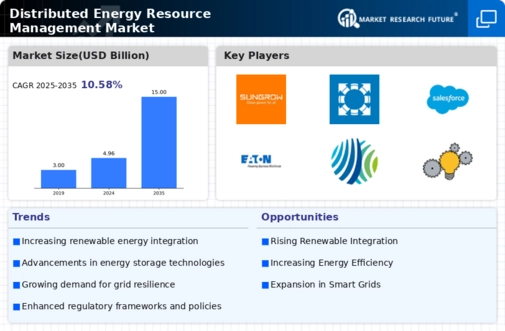
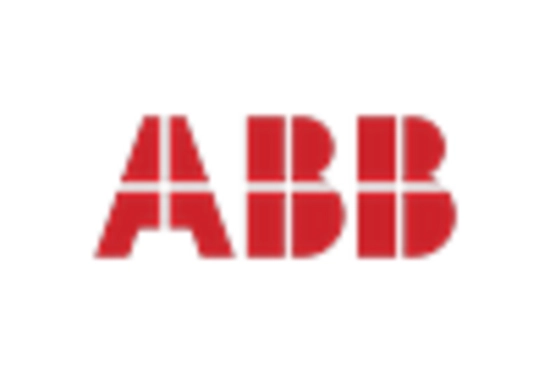
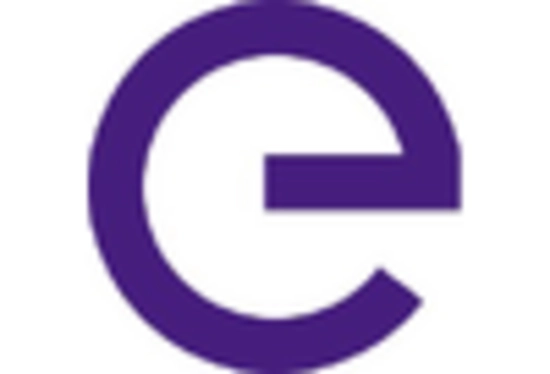
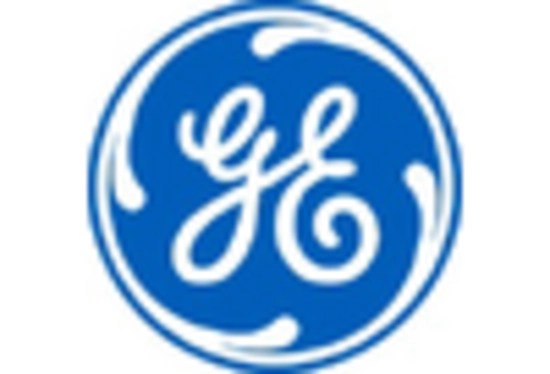

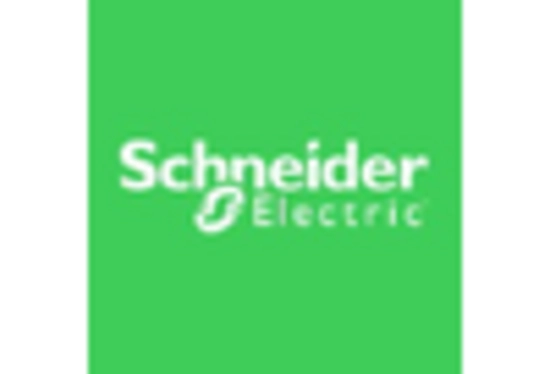
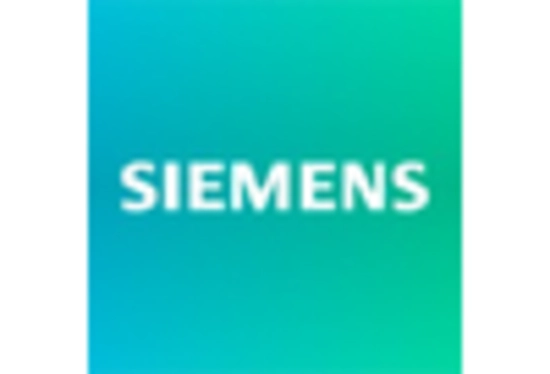

Leave a Comment